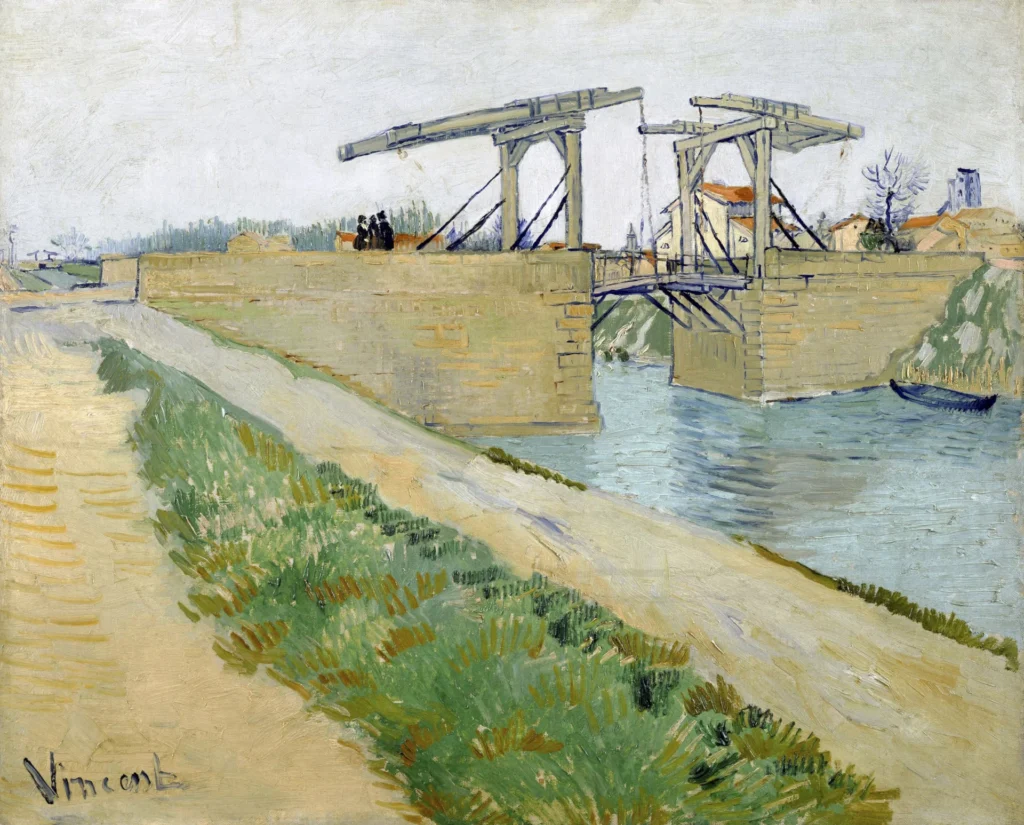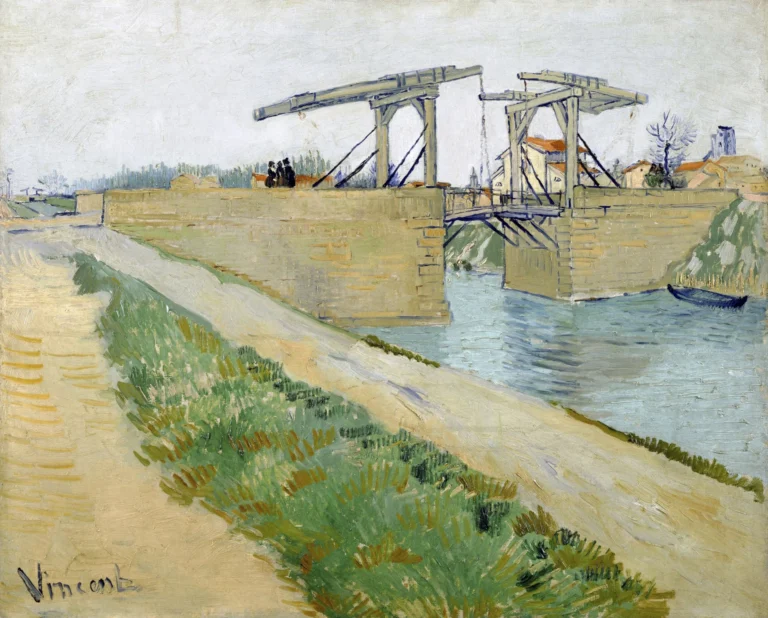The Langlois Bridge (1888)
Vincent van Gogh's Langlois Bridge series captures the drawbridge linking Arles with nature through an umbrella of vivid colors and intricate details. Created in 1888, these paintings highlight Van Gogh's fascination with Japanese aesthetics and southern light. His meticulous technique culminates in several works, including iconic pieces like 'The Langlois Bridge at Arles with Women Washing,' which revel in bright contrasts and harmonious compositions. Each rendition offers a glimpse into the artist's evolving style and passion for the everyday landscape, marking a significant moment in art history.
Year 1888
About the Artwork
The Langlois Bridge became a focal point for Vincent van Gogh during his stay in Arles, a serene and picturesque town where he sought artistic inspiration and respite from the chaos of Paris. He arrived in February 1888 and was captivated by the bridge's unusual design—reminiscent of a Japanese structure—set against the expansive southern light. Over time, he produced multiple versions of the bridge, showcasing his evolving artistic technique and philosophy. Utilizing a perspective frame, Van Gogh refined his compositions, emphasizing symmetry through reflections in the water. His series reflected a pivotal moment in his artistic journey as he adopted a lighter color palette, influenced heavily by Japanese woodblock prints. Despite the bridge's disappearance during World War II, Van Gogh's depiction immortalizes its beauty and significance, continuing to captivate audiences worldwide.
Did You Know
Van Gogh’s fascination with Japanese aesthetics is evident in his work on the Langlois Bridge. His exposure to Japanese woodblock prints greatly influenced his color choices and composition techniques, leading to a unique style that blended Western and Eastern visual traditions.
The original Langlois Bridge, which inspired Van Gogh, was replaced by a concrete structure in 1930 and later destroyed during World War II. Despite its physical loss, Van Gogh’s paintings preserve the bridge’s memory, revealing its beauty and significance in the landscape of Arles.
The Langlois Bridge series represents a significant evolution in Van Gogh’s artistry, as it showcases his transition towards brighter palettes and innovative techniques. During his stay in Arles, he developed a distinctive style that would become characteristic of his later works, emphasizing harmonious color and dynamic forms.










